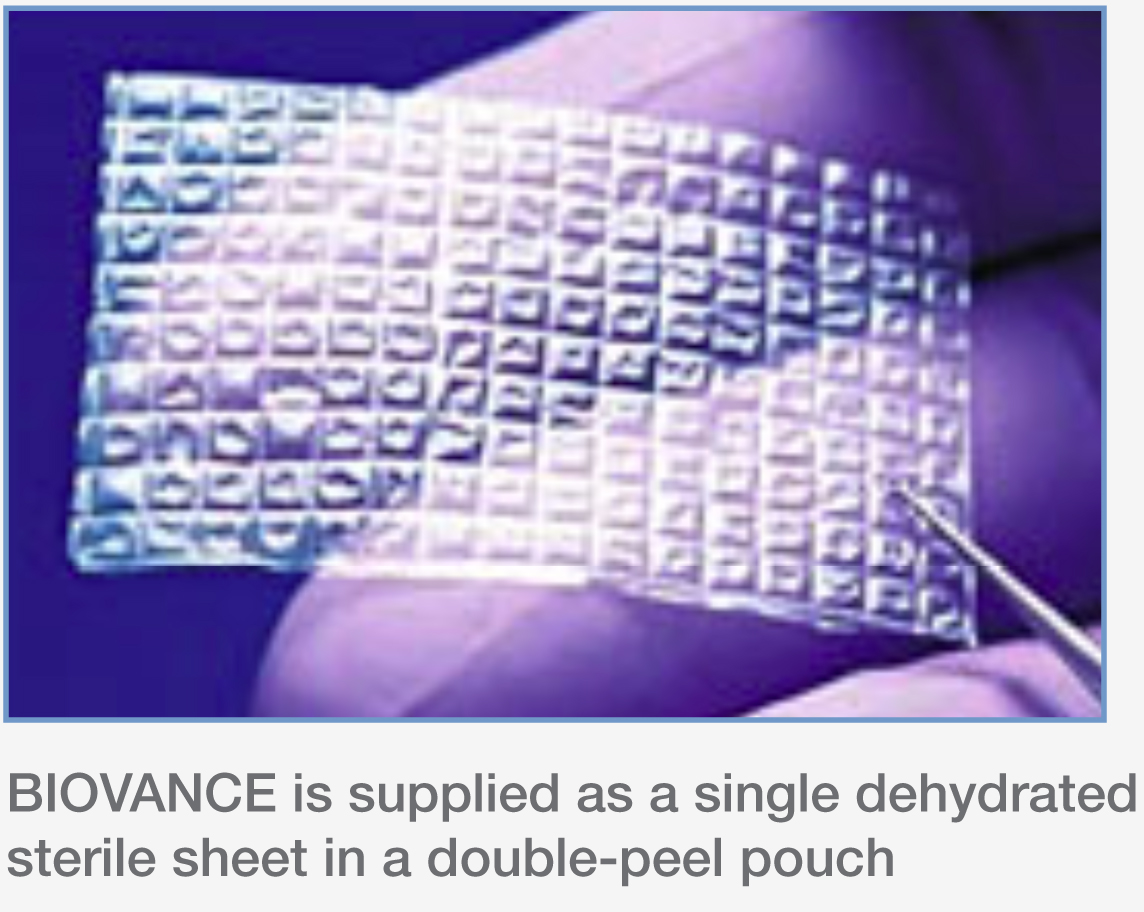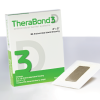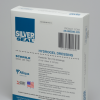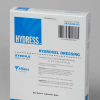Benefits
BIOVANCE is an amniotic membrane allograft derived from a natural source — the placenta of a healthy, full-term human pregnancy. The progenerative power of the amniotic membrane supports the body’s natural ability to restore tissue to a pre-wound state.1-6
The natural function of the amniotic membrane brings protection and support to the wound it covers.1-6
- Reduces inflammation4,6
- Supports tissue growth6
- Provides a biological barrier to infection6
- Minimizes pain upon application3,4
- Maintains a moist wound environment4
Indications
BIOVANCE is indicated for a broad range of wound types, including, but not limited to:
- Acute
- Chronic
- Mohs surgery
- Burns
- Trauma
- Exposed tendon, muscle, bone
- Complex
- Surgical
- Venous leg ulcers
- Diabetic ulcers
- Pressure ulcers
- Arterial ulcers
Safety
BIOVANCE is minimally processed to maximize natural benefits and safety. The immunologically inert tissue:
- Contains no antigens,6 which further minimizes the risk of inflammatory response
- Chorion layer is removed to further support the natural healing process
- Eliminates cellular debris
- Avoids potential addition of MMPs to the wound7
- Prevents need for specific orientation for placement
Application
Ease of application and wound visualization:

- Translucent grid pattern is evident on the wound until hydration to allow view of the wound’s progress
- BIOVANCE is flexible to conform to irregular surfaces
- BIOVANCE can be applied with either side facing the wound, and can be sutured, taped, stapled, or glued, as determined by the clinician
- BIOVANCE should be applied to a clean wound and covered with an appropriate secondary, non-adherent dressing
Storage
Off-the-shelf availability for a broad range of wounds.
- 5-year shelf life eliminates need for pre-ordering
- Room temperature storage (no refrigeration necessary)
Sizes
Availability in multiple sizes for application flexibility:
References
Sources
- Bhatia M, Pereira M, Rana H, et al. Mechanism of cell interaction and response on decellularized human amniotic membrane: implications in wound healing. Wounds. 2007;19(8):207-217.
- Faulk WP, Matthews R, Stevens PJ, et al. Human amnion as an adjunct in wound healing. Lancet. 1980;1(8179):1156-1158.
- Fetterolf DE, Synder RJ. Scientific and clinical support for the use of dehydrated amniotic membrane in wound management. Wounds. 2012;24(10):299-307.
- Ganatra MA. Amniotic membrane in surgery. J Pak Med A. 2003;v53(1):29-32.
- Portmann-Lanz CB, Ochsenbein-Kölble N, Marquardt K, et al. Manufacture of a cell-free amnion matrix scaffold that supports amnion cell outgrowth in vitro. Placenta. 2007;28(1):6-13. Epub2006.
- Niknejad H, Peirovl H, Jorjani M, et al. Properties of the amniotic membrane for potential use in tissue engineering. European Cells and Materials. 2008;15:88-99.
- Arechavaleta-Velasco F, Marciano D, Díaz-Cueto L, Parry S. Matrix metalloproteinase-8 is expressed in human chorion during labor. Am J Obstet Gynecol. 2004;190:843-850.







